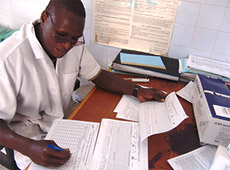Vaccine regulations

Formal regulation began with vaccine testing, and in response to tragedies associated with vaccine use, more comprehensive regulatory procedures began to be defined.11
In the United States of America, the country with the longest history in vaccine regulation, 20 children became ill and 14 died in 1901 following receipt of an equine-derived![]() Equine-derivedA substance extracted from horses, e.g. some antibodies used in passive immunization are extracted from the serum of horses exposed to the target antigen. diphtheria
Equine-derivedA substance extracted from horses, e.g. some antibodies used in passive immunization are extracted from the serum of horses exposed to the target antigen. diphtheria![]() DiphtheriaA disease caused by toxigenic strains of Corynebacterium diphtheriae. Often marked by the formation of a false membrane in the throat, diphtheria is a serious vaccine-preventable disease that can cause death in unvaccinated children. antitoxin contaminated with tetanus
DiphtheriaA disease caused by toxigenic strains of Corynebacterium diphtheriae. Often marked by the formation of a false membrane in the throat, diphtheria is a serious vaccine-preventable disease that can cause death in unvaccinated children. antitoxin contaminated with tetanus![]() TetanusA disease caused primarily by toxigenic C. tetani. The rare but often fatal disease affects the central nervous system by causing painful muscular contractions. toxin.
TetanusA disease caused primarily by toxigenic C. tetani. The rare but often fatal disease affects the central nervous system by causing painful muscular contractions. toxin.
This event stimulated the first legislation to regulate the sale of biologicals![]() BiologicalsA medical product prepared from biologic material of human, animal, or microbiologic origin (e.g., blood products, vaccines, insulin)., the Biologics Control Act, signed into law in 1902.12
BiologicalsA medical product prepared from biologic material of human, animal, or microbiologic origin (e.g., blood products, vaccines, insulin)., the Biologics Control Act, signed into law in 1902.12
Today vaccine regulation includes a range of functions that cover the entire continuum of vaccine development, licensure![]() LicensureThe granting of a license to conduct a regulated procedure, for example, to conduct a trial of a new vaccine or to approve a vaccine for routine delivery to the public in a vaccination programme., and use.
LicensureThe granting of a license to conduct a regulated procedure, for example, to conduct a trial of a new vaccine or to approve a vaccine for routine delivery to the public in a vaccination programme., and use.
Progress in vaccine regulation globally includes shifts towards strictly defined procedures for vaccine consistency, reliance on Good Manufacturing Practices (GMPs) rather than final product testing and continued vaccine pharmacovigilance and impact surveillance![]() SurveillanceThe systematic collection, analysis, interpretation, and dissemination of health data on an ongoing basis, to gain knowledge of the pattern of disease occurrence and potential in a community, in order to control and prevent disease in the community. rather than individual, sporadic field studies.
SurveillanceThe systematic collection, analysis, interpretation, and dissemination of health data on an ongoing basis, to gain knowledge of the pattern of disease occurrence and potential in a community, in order to control and prevent disease in the community. rather than individual, sporadic field studies.

